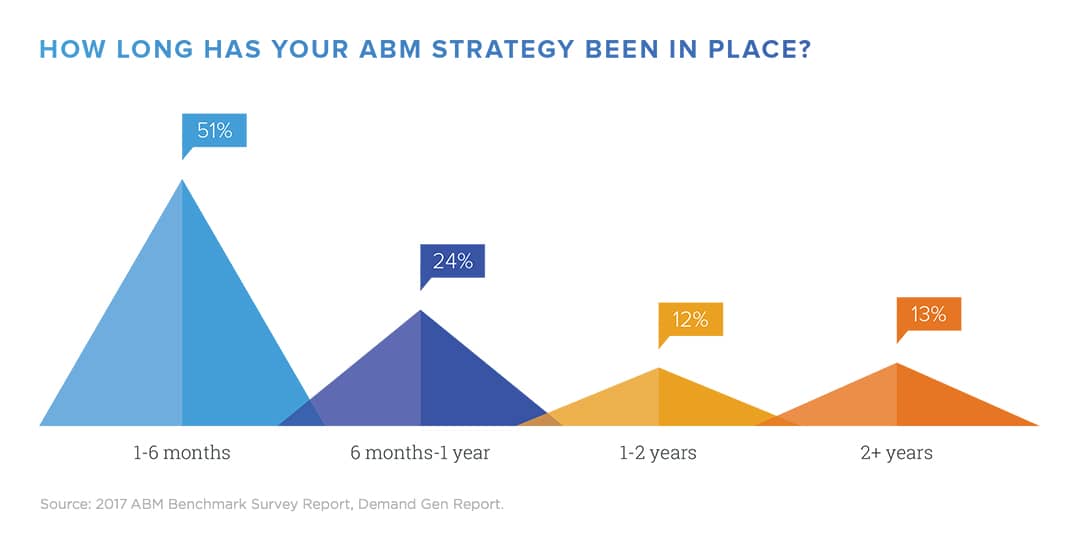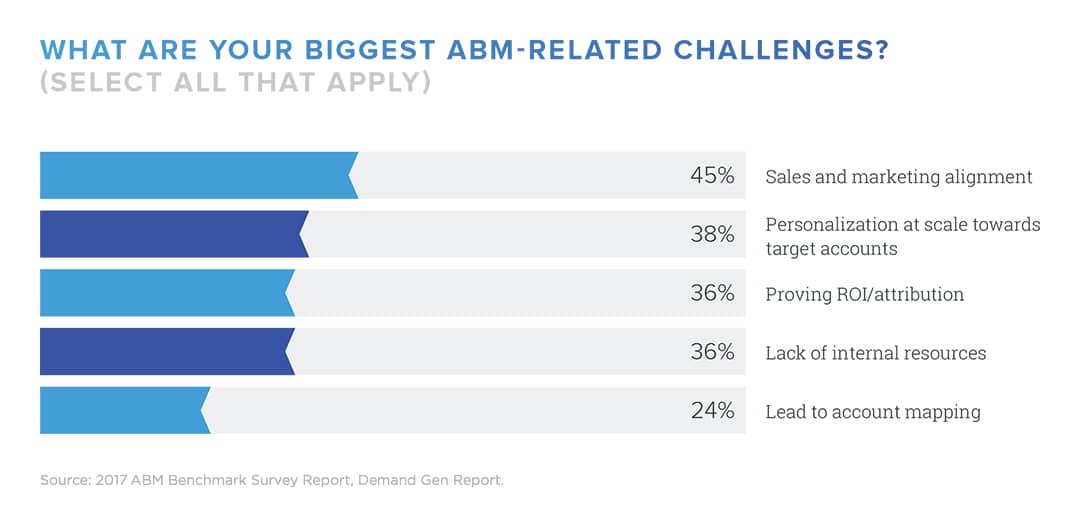
4 keys to a better bond between marketing and sales via ABM
Cliché aside, account-based marketing (ABM) really is a journey. One that sales and marketing must take together. It requires a shared vision, a shared commitment and shared objectives. Yet, like any journey worth taking, it’s proving to have bumps and even hurdles.
More and more companies are now embarking on this journey. To gauge their progress, we recently partnered with Demand Gen Report on their Second Annual ABM Benchmark Survey [PDF] , which found that over three quarters of respondents have had their ABM strategies in place for less than a year.
It’s at this formative stage—as ABM moves from broad hype to internalized hope—that the importance of the symbiotic relationship between sales and marketing becomes abundantly, and sometimes painfully, clear to ABM strategists and practitioners.
…the biggest ABM challenge facing organizations isn’t about technology or content, data or even budget. It’s lack of alignment between sales and marketing.

So how do you bridge this divide? Quarry gets to lift the hood on many ABM programs for our B2B clients. Here’s what we have seen that works well to bring sales and marketing together:
- Start at the top: Marketing leadership needs to secure the buy-in of sales leadership. Convincing sales leadership to endorse the theory of ABM (even if they remain skeptical until shown quantitative proof of its merit) is critical to ensuring that the rest of the sales organization collaborates and cooperates as necessary.
- Show them the numbers: Now that ABM has been more widely adopted, there are numerous reports and case studies that share the metrics that matter to sales. Look for examples from within your industry or from organizations similar to yours, as they will be the most influential.
- Set clear expectations: Sales is busy. If they believe ABM is going to demand more of their time and effort, no wonder they’re loath to support it. And ABM does require more active sales involvement. Be very clear about what will be required of sales and when they will need to be involved, but for every step, be sure to explain the benefits to sales of this participation.
- Run a pilot: In most enterprises, there will be a few sales team members who are keen to trial ABM. Conduct a pilot involving those lean-forward folks. Positive results should help convince the hold-outs.
ABM is less about effective marketing and more about leveling-up marketing’s support of sales…
ABM is less about effective marketing and more about leveling-up marketing’s support of sales: delivering better-qualified, more engaged accounts that have a higher level of sales-readiness. And while these outcomes will deliver tangible bottom-line benefits today, an improved marketing and sales relationship will deliver tangible and intangible gains tomorrow and beyond.
If you’d like to get down to the nuts-and-bolts, real-world aspects of ABM, I’ll be co-presenting a session with our colleagues from Windstream Enterprise at the B2B Marketing Exchange event in Scottsdale, AZ on February 21. Please say hello if you’re there!